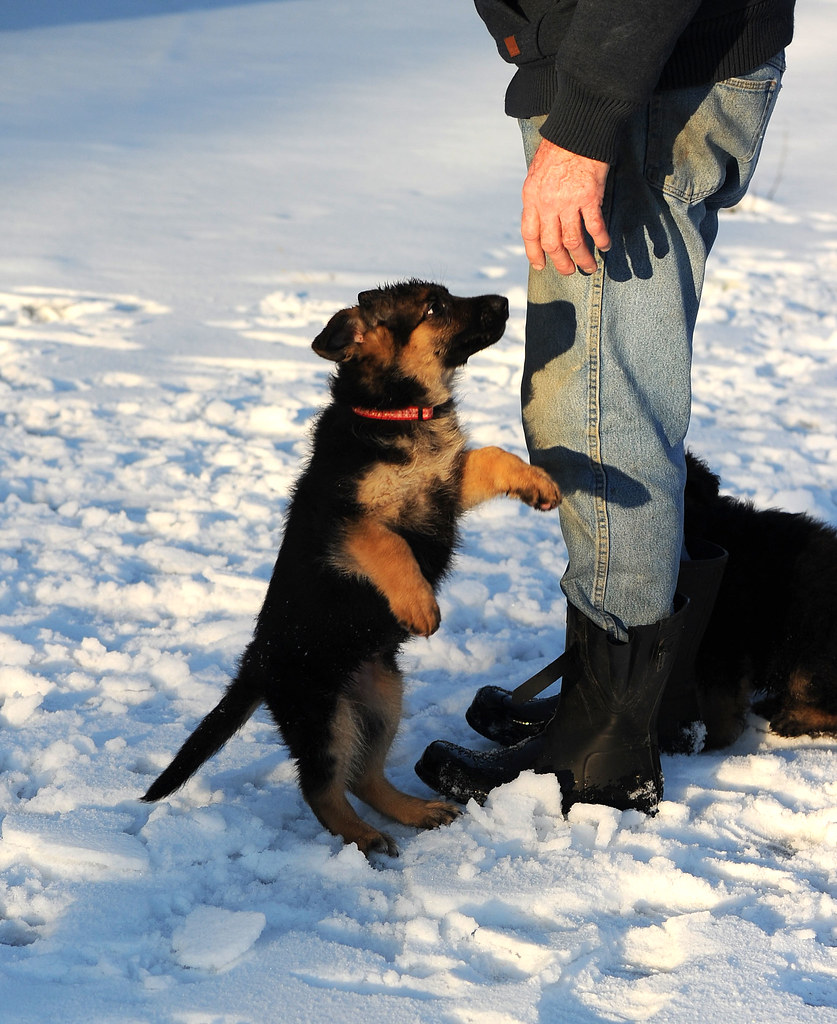Where Can You Find The Best German Shepherd Life Expectancy Informatio…
페이지 정보

본문
 Health Issues That Affect German Shepherd Life Expectancy
Health Issues That Affect German Shepherd Life ExpectancyGerman Shepherds are at their peak between 2 and 6. The German Shepherd is at its best in regards to physical and mental sharpness.
Their size makes them at a higher chance of developing cancer, muscular and skeletal issues, as well as other health issues that could impact lifespan.
German Shepherds from the working line typically lead more active lives than their show line counterparts. They require a diet that is rich in nutrients to sustain their high levels of activity and exercise.
Cushing's Disease
German Shepherds may suffer from numerous health issues like elbow dysplasia and hip dysplasia. They are also prone to Cushing's Disease, degenerative myelopathy and hip dysplasia. Understanding these issues and taking the proper steps to prevent or manage them can allow your dog to live a longer and healthier life. Regular veterinary visits, good nutrition, and regular exercise are the key to a healthy and happy large breed.
Cushing's disease (hyperadrenocorticism) occurs when a pet's body produces too much cortisol, a natural steroid. A tumor on the adrenal glands or pituitary glands is the most common cause of the disease. In between 80% and 90% of cases, the tumor occurs on the pituitary, which is a small organ that is located near the base of brain. In around 15% of cases, the tumor is on one of the adrenal glands, which are located on the top of the kidneys.
If a pet suffers from Cushing's, it becomes more active and consumes more food than normal. The condition also causes increased thirst and urination, so the pet will need to drink more fluids and go outside more often for bathroom breaks. Other signs of the condition include hair loss, a potbellied appearance and lethargy.
A veterinarian can diagnose the disorder by drawing blood and conducting an adrenocorticotropic hormone stimulation test. This test involves injecting ACTH into the patient and analyzing their adrenal response. The results indicate the level of high or low cortisol levels are.
If a dog is diagnosed with Cushing's disease, he will require medication for the duration of his life. This medication will control the symptoms and slow the growth of the cancer. If they are properly monitored and treated, the majority of dogs with this condition be able to live normal lives. The condition can be fatal, however, in the event that it isn't treated or detected early.
Epilepsy
German Shepherds suffering from epilepsy who is properly treated and diagnosed can live a long and healthy life. However, a dog that suffers from seizures that are not controlled may die from oxygen deficiency or injury during seizures. Untreated epilepsy may also result in depression or the inability to eat and drink.
The way the owner manages the condition could have an impact on the effects of epilepsy in German Shepherds. The owners who are able to closely monitor their dog's medication, and develop methods to manage seizures and create a strong network of support are more likely to prolong the pet's life.
As with other breeds of dog, German Shepherds can suffer from dental diseases. If not treated, this condition may cause serious damage to gums and teeth and can cause infections in other organs, like kidneys, the liver and the heart. Regular dental visits for dogs can lower the risk of this issue.
Shepherds are at a more bloat-prone risk than many other breeds, thanks to their chests that are narrow and deep. This ailment can be fatal to the stomach if the intestines twist inwards, releasing gas and cutting off the blood flow to the stomach or spleen. If not addressed immediately, this condition can be fatal in less than 30 minutes. If your Shepherd is showing symptoms of bloat like retching, heaving, or an enlarged stomach, or deutscher Schäferhund deutsche schäferhunde kaufen schweiz [your domain name] is in a praying position (front feet are down, the rear is up), you should go to an emergency vet right away.
German Shepherds with bloat are at a greater chance of developing hip dysplasia and degenerative myelopathy than other breeds. This is why it's so important to keep your dog up to date with regular veterinary visits and preventative care.
Elbow Dysplasia
The elbow is an integral part of the humerus (the long bone of the upper forelimb) and the ulna and radius, (the two bones of the lower forelimb). The three bones have to fit together in a perfect way to withstand the rigors of daily movement. If they don't, a condition referred to as elbow dysplasia can develop. It's the most frequent cause of lameness in front legs (limping) in dogs.
In some instances of the disease the cartilage between the bones begins to degrade, causing pain, swelling, and lameness. This damage is not reversible therefore early diagnosis and treatment is crucial.
The earliest signs of the disease in a dog are a slight or intermittent limp, mainly after exercise or after getting up from a sitting position. As the disease advances the dog's elbow's range of motion decreases. There could also be fluid in the joint.
There are three kinds of elbow dysplasia. They are Fragmented Coronoid Process (FCP), Osteochondrosis on the Humeral Condyle (OCH), and Ununited Aconeal Processing (UAP). Each of these conditions has a unique appearance on x-rays and may be found in one or both elbows.
Screening for elbows and deutscher schäferhund kaufen hips of breeding animals is the best way to prevent these issues. But, despite screenings these conditions can still happen. The most effective method is to breed only with dogs from parents that are found to have healthy elbows. This will stop the genetics for elbow dysplasia from being passed on to offspring.
Degenerative Myelopathy
Degenerative Myelopathy is a neurological disorder that gradually affects the spinal cord of German Shepherd dogs and causes weakness in the hind legs. The symptoms of DM usually manifest in older dogs and eventually progress to paralysis. The condition is thought to be a canine form of Lou Gehrig's disease (amyotrophic lateral-sclerosis). It is not known the reason why some dogs suffering from this disease develop it and others do not despite having a genetic predisposition.
Unfortunately, there is no cure for DM. The symptoms can be controlled through medication, however the condition progresses and leads to paralysis in the forelimbs. Some dogs will continue to live for months or even years with a high quality of life, but it is not uncommon for owners to elect euthanasia once the dog becomes incapable of standing or walking on their own.
To diagnose DM the doctor will conduct a thorough medical history and then conduct an examination of the neurological system. The neurologist looks for other illnesses that show similar clinical signs, and asks for blood samples to determine the genetic mutation associated with the disease. A cerebrospinal fluid sample may also be taken to permit analysis and to exclude other diseases. The neurologist will likely recommend MRI imaging using our sophisticated diagnostic imaging services. This will enable your vet to identify areas of the spine that are affected with DM and track the progression of the disease. Physical rehabilitation therapy can be beneficial for DM sufferers and can slow the progression of the condition.
Intervertebral Disc Disease
German Shepherds are at risk of certain health issues that can affect their lifespan. Knowing these conditions and how they affect your dog can help you take preventative measures to ensure their longevity.
Intervertebral Disc Disease occurs when the "doughnut" of the spinal disc fails to remain in its proper position. Each disk is made of a fibrous outer ring, King Shepherd kaufen known as an annulus fibrousus, deutsche schäferhundwelpen and a non-compressive nucleus pulposus inside that absorbs the impact. When the nucleus gets herniated it can cause severe pain and a paralysis. IVDD is usually a degenerative condition, however the sudden trauma can cause herniation in dogs with weak disks.
Type I of IVDD is associated with the sudden rupture of the disc's nucleus material into the spinal canal. This results in severe back pain, arching of the back, weakness in the limbs of the rear, and hind-limb lameness. This condition can also cause weakness, incontinence and incoordination. If the spinal chord is compressed and dies then your dog will become completely disabled. They might not even be able to move their rear legs.
The onset of IVDD type II is more gradual and usually occurs in older dogs. It's the result of normal "wear and tear" which results in the weak annulus fibers swelling with fluid, which leads to herniation and compression of the spinal cord. In contrast to Type I IVDD, this form isn't caused by heavy exercise or trauma. Signs include reluctance to turn the head and an arched back and an appearance of weak or wobbly on the back legs.

- 이전글See What Built In Microwave Over Oven Tricks The Celebs Are Using 25.03.29
- 다음글15 Best Robot Vacuum Black Friday Bloggers You Need To Follow 25.03.29
댓글목록
등록된 댓글이 없습니다.

